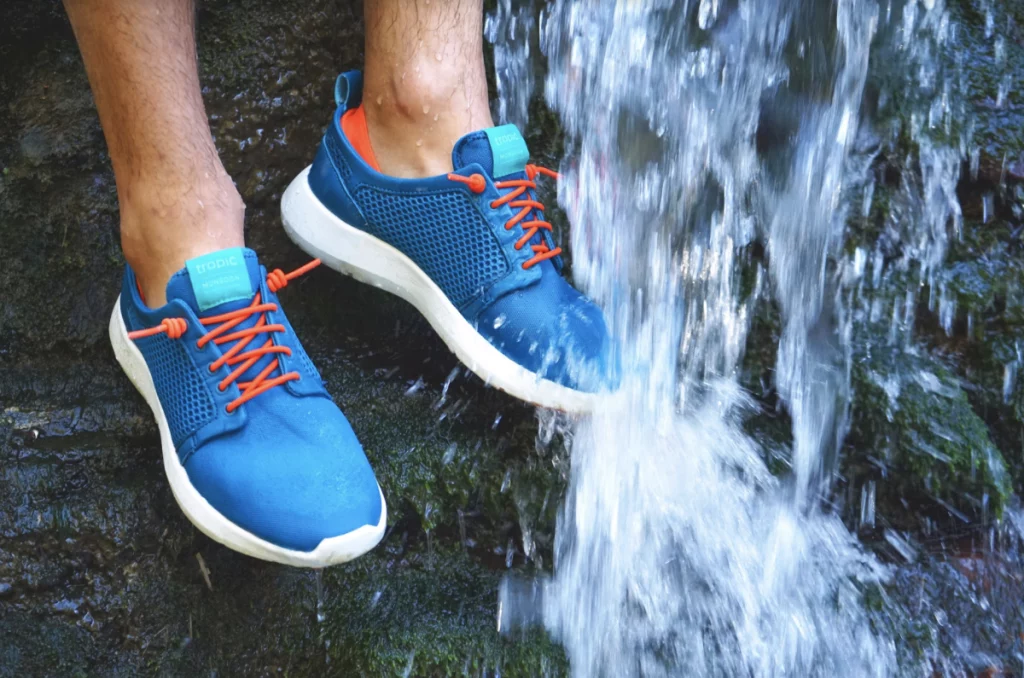
In 2016, after a year of working on a crowdfunding platform, Alberto Espinós, then 23 years old, took all his consecutive vacation days to travel with his friends through Southeast Asia. Upon his return, he brought back not only experiences and memories but also the idea of creating versatile footwear. In 2018, the first Tropicfeel sneakers exploded on Kickstarter, a crowdfunding platform, with a campaign that raised over two million euros.
The Inspiration and Creation
Espinós transitioned from assisting other entrepreneurs in search of funding to becoming one himself not long after those vacations. He was inspired by the footwear his friends and he carried in their backpacks during the trip. “It was during that journey when I personally felt the need for all-terrain sneakers that would have allowed me to travel with just one pair instead of the three or four each of us carried,” recalls the founder and CEO.
In December of the same year, he left his job and in 2017 immersed himself in a phase of learning and prototype conception, with the financial support of a loan from Enisa. This backing, he says, was crucial for planning and preparing the brand’s presentation on the platform in April 2018. “We made all the preparations, obtained that funding from Enisa to launch our first campaign on Kickstarter, and dreamed of making it as big as possible with the goal of introducing as many pairs of sneakers to the market as possible,” Espinós remembers.
Building a Community of Customers
The result exceeded their expectations: “Our first campaign was a great surprise,” says the 30-year-old from Barcelona. In 51 days, more than 26,200 people from about 140 countries backed their project, and the company then became the highest-grossing brand in the footwear category. This move not only provided them with 2.1 million euros in funding, which was essential for the project and marked a before and after for the brand, but also the possibility of creating a community where many of those early buyers still remain.
They started with sneakers, but currently their catalog includes suitcases and backpacks, clothing, and accessories. Their intention, says the founder, was to create versatile products for an audience concerned about sustainability, which would serve for traveling, enjoying hobbies or outdoor activities, but also work for everyday use. “That adapt to your lifestyle so that they never really stay in the closet,” he comments. They also use organic and post-consumer recycled materials and, they say, have a relationship with partners and manufacturers that allows them to offer the “maximum transparency possible” in their supply chains and value.
Growth and Expansion
That first campaign was followed by four more, but it ceased to be the only means of microfinancing when they transferred part of the fundraising to their own page after realizing that their catalog could grow at a faster rate than Kickstarter’s rhythms allowed. The US platform became a tool for validation in new product categories. On the other hand, they opened their capital to private investors and signed rounds in 2020, 2021, and 2023, totaling about eight million euros.
The company, which employs about 45 people, generated 22 million euros in revenue in 2022 and, after reaching operational breakeven earlier this year, the project is already profitable. Their main distribution channel is online, where they expect to record around 90% of sales in 2023. However, Espinós says, they are seeking and already working to gradually increase the presence of physical stores. “We have always focused our efforts on growing our brand through the digital channel. We believe that the brand has reached a sufficiently attractive level of maturity to convince and take it to the physical channel through third parties.”
They currently have their own store and have also started working with distributors in different countries. “We have a lot of energy and enthusiasm invested in this strategy with different sales channels,” he says about one of Tropicfeel’s steps moving forward.

